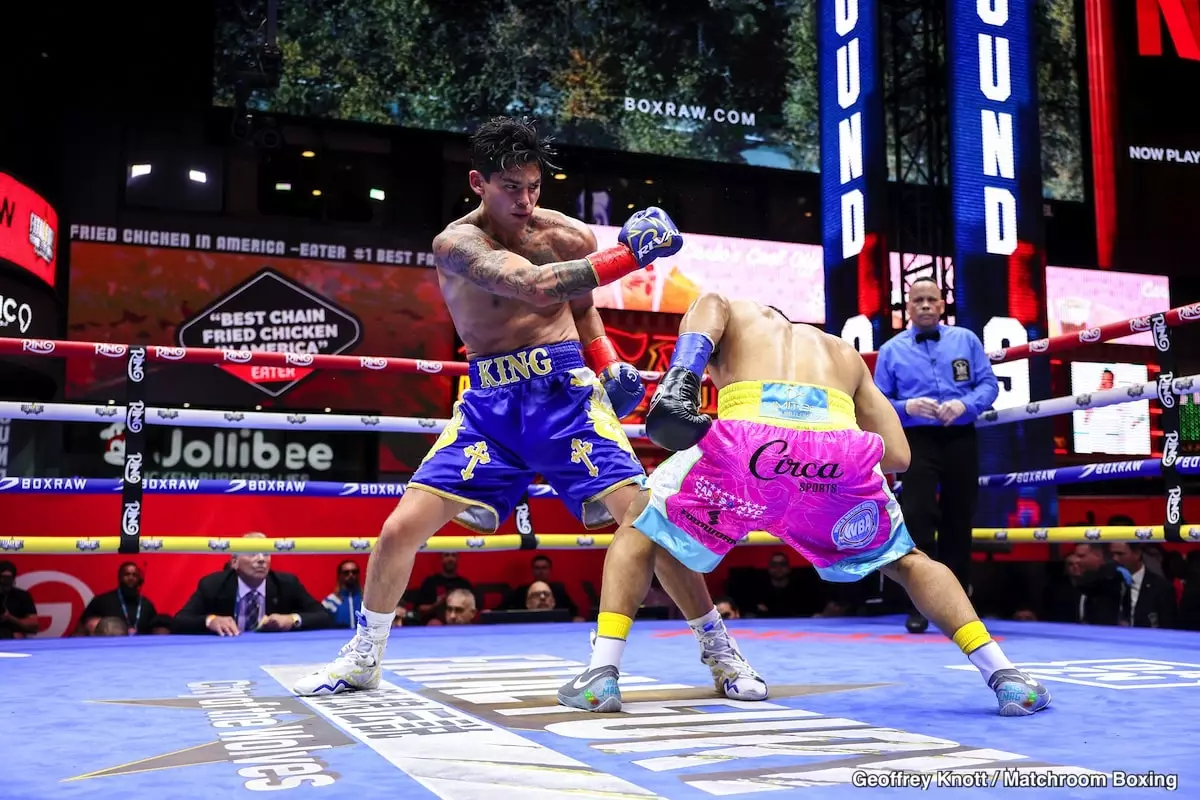In a landscape where talent is frequently hyped beyond its true measure, Ryan Garcia recently found himself center-stage, but not in the way he envisioned. After his defeat to Rolando “Rolly” Romero, the echoes of Lionel Thompson’s critiques ring loud and clear. Thompson urges Garcia to reconsider his future, suggesting that perhaps pursuing a “regular job” or further indulging in his “YouTube sensation” status might be more suited for him after this lackluster performance. Analyzing Garcia’s fight, it becomes evident that his aspirations of being seen as a boxing titan remain unfulfilled. His inability to engage in combat effectively against Romero, who won via a second-round knockdown, casts serious doubt on his potential as a formidable contender.
Garcia’s downfall was not merely due to Romero’s skill but rather his own psychological warfare. He appeared hesitant, almost like a deer caught in headlights. An athlete with aspirations of greatness, who crumbles and retreats after a single setback cannot be regarded as anything more than “ordinary,” as Thompson so brutally exemplified. With a record of 24 wins and 2 losses but mired in performances like this, Garcia risks becoming a footnote in the annals of boxing history.
The Reality Check from Rolly Romero
On that fateful night in Times Square, Garcia’s performance was labeled as walking on eggshells. Throwing a meager 207 punches and connecting with only 31.4% accuracy illustrates a fighter who either lacks confidence or possesses a misguided strategy. Thompson accurately points out that every attack from Romero sent Garcia scuttling back, which suggests not just a physical disadvantage but a fundamental psychological barrier. Garcia’s main weapon—his esteemed left hook—became irrelevant in the face of his own fear. Instead of leveraging his skills, Garcia chose to evade, relying solely on survival rather than seeking victory.
Romero’s left hook proved pivotal, not only delivering a knockdown but setting the tone for the fight that followed. Garcia’s retreating nature was on full display, as he dominated the offensive terrain while failing to take any risks that could have turned the tide. Such hesitancy raises bigger questions about his training regimen and mental fortitude. If he had been truly prepared, one would anticipate a more aggressive approach, one that would daunt an opponent and reclaim the fight’s momentum.
The Diminishing Returns of Hype
As boxing heads into an era increasingly dominated by social media personas and sensationalism, the critique of “manufactured fighters” becomes all the more relevant. Thompson’s assessment cuts through the noise, labeling Garcia and his contemporaries as products of promotion rather than purveyors of genuine talent. The terms “spoiled millionaires” and “manufactured fighters” suggest that these athletes are shielded from real challenges while their charisma, crafted by social media, takes precedence over actual fighting prowess.
In a world where followers and likes can eclipse skill and integrity, it is deplorable that the essence of boxing—grit, struggle, and authenticity—has been traded for star power. The likes of Garcia, Teofimo Lopez, and Devin Haney are often paraded as the cream of the crop, yet their skills—the very essence of what makes one an authentic fighter—seem dubious at best. With the spotlight shining intensely, their weaknesses become glaringly apparent, exposing an uncomfortable truth: it might take more than follower counts to measure their true worth in the ring.
A Deceptive Future? Rematches and Reputation
As Garcia’s career progresses, the path ahead seems narrow and fraught with challenges. Instead of securing a swift rematch with Romero to redeem himself, speculation suggests he’s angling for a face-off against Devin Haney. It raises eyebrows—is this a challenge Garcia feels comfortable taking, or is it merely a desperate attempt to align with a more lucrative payout? Given his subdued performance against Romero, one must wonder if his decision to avoid immediate rematch showcases an acute awareness of his limitations.
Thompson’s analysis also highlights a critical shift in boxing dynamics: the disparity between hype and reality. The emergence of fighters without widespread acclaim, yet capable of delivering thrilling displays, serves as a foil to hyped-up names who fail to deliver on the promise. The insatiable desire for marketable characters dilutes the essence of the sport. It presents an alarming picture, where skills are less important than Instagram followers, threatening the core values and authenticity of boxing.
In uncovering the truth about Ryan Garcia, we face the uncomfortable reality that sheer presence and charisma do not constitute greatness in the sport. His recent performance symbolized more than just a setback; it underscores the perilous intersection of fame and genuine skill, where fighters are marketed as champions, yet falter dramatically when faced with true competition.


Leave a Reply